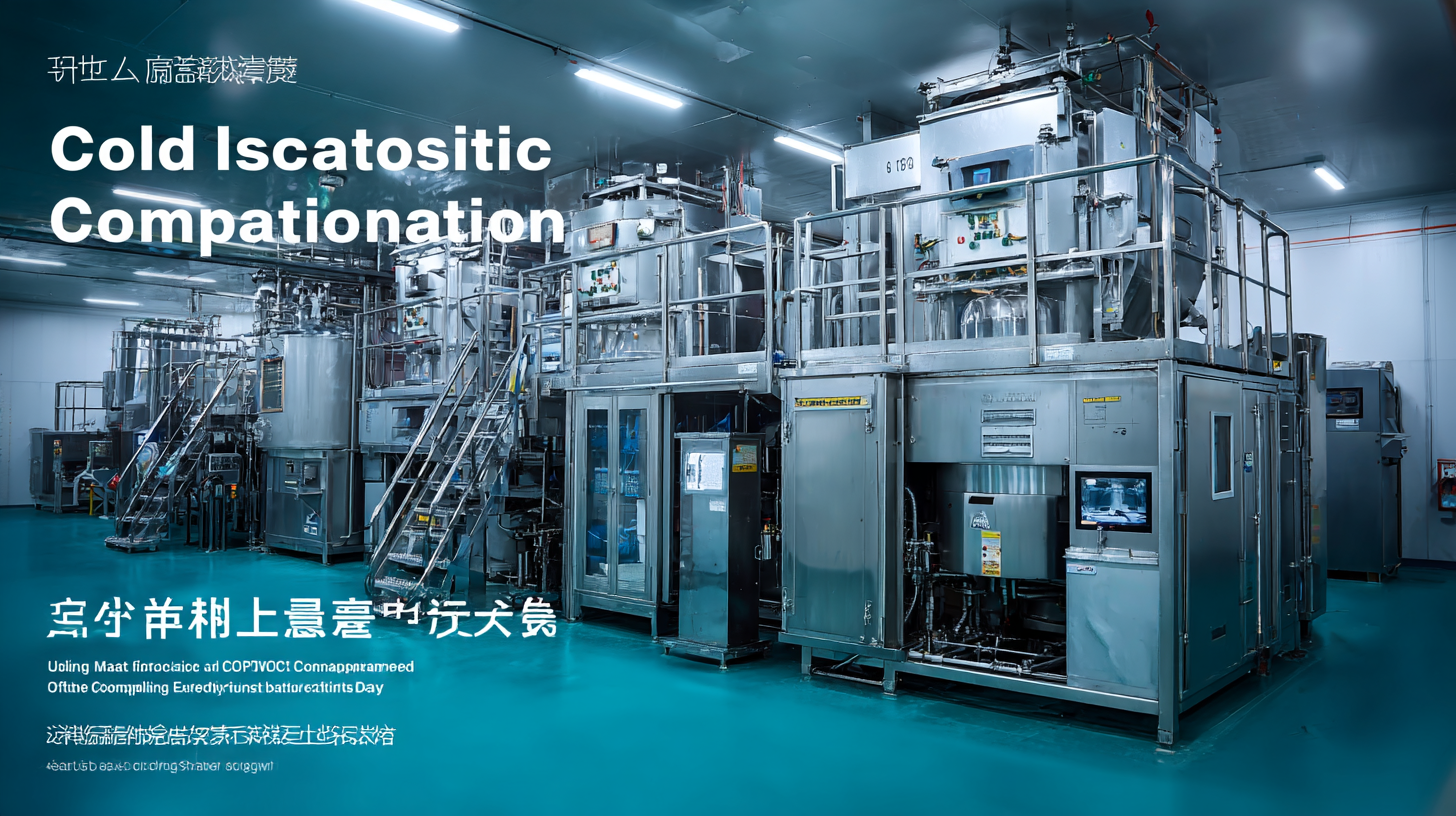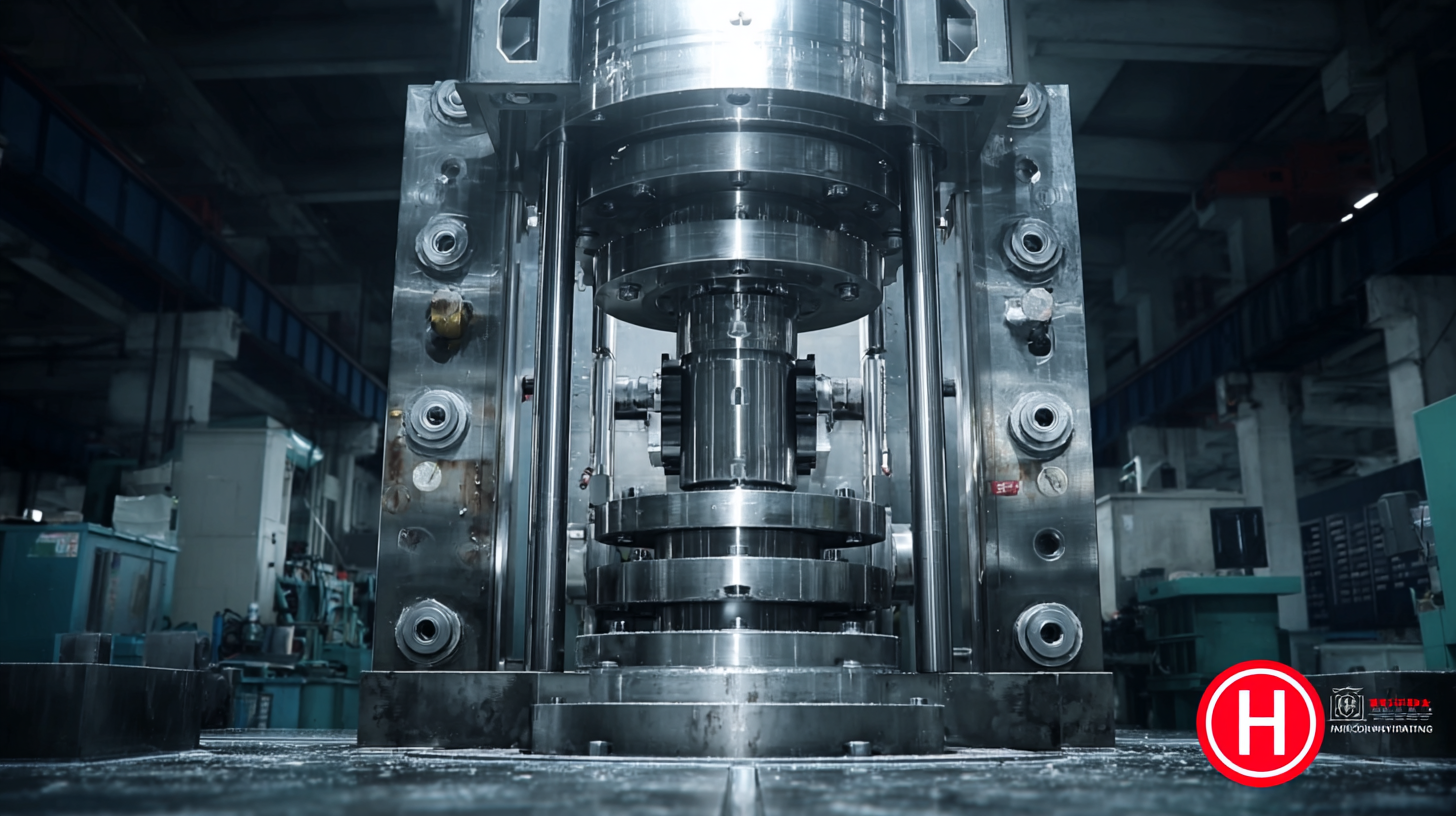Unmatched Manufacturing Excellence with Best Cold Isostatic Compaction from Leading Chinese Factory
In recent years, the landscape of manufacturing has seen a significant transformation, particularly in the realm of advanced materials processing techniques. One such technique that has garnered attention is Cold Isostatic Compaction (CIP), which is poised to revolutionize the industry by enhancing the density and uniformity of materials. According to a recent market report, the global cold isostatic pressing market is projected to reach USD 5 billion by 2025, growing at a CAGR of 6.3% during the forecast period. This growth is driven by increasing demand for high-performance materials in sectors such as aerospace, automotive, and electronics. Leading Chinese manufacturers are at the forefront of this innovation, leveraging state-of-the-art technology and expertise to deliver unmatched quality and precision. As we look towards 2025, the importance of Cold Isostatic Compaction in achieving manufacturing excellence cannot be overstated, setting new benchmarks for efficiency and material performance in an increasingly competitive landscape.

Challenges in Traditional Manufacturing Methods for Cold Isostatic Compaction
Traditional manufacturing methods for cold isostatic compaction often face several significant challenges that hinder efficiency and product quality. One major issue is the inconsistency in pressure distribution across the material, which can lead to uneven compaction and variations in final product dimensions. This inconsistency results from the limited ability of traditional equipment to uniformly apply pressure, particularly in complex geometries or larger components. Consequently, manufacturers struggle to meet high standards of precision demanded by modern industries.
Another challenge is the lengthy processing time associated with conventional methods. Traditional techniques often rely on manual adjustments and prolonged cycle times, which slow down production and increase operational costs. As industries demand faster turnaround times without compromising quality, these outdated processes become increasingly untenable. The reliance on older technologies also makes it difficult for manufacturers to adapt to new materials or evolving industry standards, thereby limiting innovation and growth potential in the competitive landscape of cold isostatic compaction.
Identifying Common Deficiencies in Cold Isostatic Compaction Processes
Cold Isostatic Compaction (CIC) is a widely used technique in the manufacturing sector, particularly for creating precision parts in industries like aerospace and automotive. However, despite its advantages, many manufacturers face common deficiencies in their CIC processes that can lead to suboptimal outcomes. One notable issue is the uneven pressure distribution during compaction, which can result in inconsistencies in density and mechanical properties of the final products. This unevenness is often due to inadequate tooling design or improper setup of the compaction chamber.
Another prevalent deficiency is the insufficient control over the process parameters, such as temperature and time. Manufacturers may not monitor these variables closely, leading to variations that affect the microstructure and performance of the materials. Additionally, the lack of standardized procedures among different operators can introduce variability, compromising the uniformity and quality of the parts produced. Addressing these shortcomings is crucial for factories looking to enhance the efficiency and reliability of their cold isostatic compaction processes, ensuring that they meet the strict standards required in high-performance applications.

Impact of Inefficient Practices on Manufacturing Quality and Costs
Inefficient practices in manufacturing can significantly undermine product quality and inflate operational costs. When factories adopt outdated methods or fail to streamline their processes, they may experience increased material waste, longer production times, and ultimately, a higher rate of defects. These inefficiencies not only lead to increased expenditure but also compromise the reputation of the brand, making it crucial for manufacturers to continuously assess and optimize their operational workflows.
 Cold isostatic compaction, when executed with precision and expertise, stands as a prime example of how modern manufacturing techniques can mitigate these issues. By utilizing advanced machinery and adhering to stringent quality controls, leading Chinese factories demonstrate that investing in efficient practices pays dividends.
Cold isostatic compaction, when executed with precision and expertise, stands as a prime example of how modern manufacturing techniques can mitigate these issues. By utilizing advanced machinery and adhering to stringent quality controls, leading Chinese factories demonstrate that investing in efficient practices pays dividends.
Manufacturers who shift towards these techniques can drastically decrease material waste and improve product consistency, thereby enhancing overall manufacturing quality. This ultimately translates to lower costs, fostering a competitive edge in an increasingly global market.
Solutions to Overcoming Cold Isostatic Compaction Limitations in Production
Cold Isostatic Compaction (CIC) has emerged as a pivotal process in manufacturing, especially for advanced materials. However, the technique does have its limitations, which can impede production efficiency and product quality. One key challenge is uniformity in compaction, as achieving consistent density throughout the material can be difficult with traditional methods. Leading Chinese factories are now innovating solutions that enhance the effectiveness of CIC, thereby addressing these hurdles. By utilizing advanced technologies, such as real-time monitoring and adaptive pressure control, manufacturers are significantly improving density uniformity.
Another limitation of traditional CIC practices is the extended processing times required for achieving desired results. This can lead to bottlenecks in production schedules. To combat this, manufacturers are investing in high-speed compaction chambers and optimizing material formulations, which reduce cycle times and enhance throughput. Furthermore, advancements in tooling and material handling systems minimize manual intervention, thereby reducing the risk of human error and streamlining the entire compaction process. These innovative approaches position leading Chinese factories at the forefront of overcoming CIC limitations and fostering unmatched manufacturing excellence.
Production Efficiency of Cold Isostatic Compaction Techniques
Best Practices for Achieving Optimal Cold Isostatic Compaction Results
Achieving optimal results in cold isostatic compaction requires meticulous attention to best practices that leverage advanced techniques and innovative technology. One essential practice is the careful selection of materials. Utilizing high-purity powders and minimizing contaminants can significantly enhance the density and mechanical properties of the final product. Moreover, specific parameters need to be closely monitored, including pressure levels and compaction times, as these factors directly influence the uniformity and structural integrity of the compacted components.
Another key aspect is the importance of controlled environmental conditions during the compaction process. Precise temperature and humidity levels help to prevent unwanted reactions and variabilities in density, ensuring consistent performance across batches. Furthermore, employing advanced monitoring systems can facilitate real-time adjustments, allowing manufacturers to maintain optimal conditions throughout production. By integrating these best practices into their operations, leading Chinese factories can position themselves at the forefront of the cold isostatic compaction market, delivering unmatched manufacturing excellence tailored to the evolving needs of the industry.
Unmatched Manufacturing Excellence with Best Cold Isostatic Compaction - Best Practices for Achieving Optimal Cold Isostatic Compaction Results
| Parameter | Description | Value |
|---|---|---|
| Pressure Applied (MPa) | The pressure applied during the cold isostatic compaction process. | 150 |
| Compaction Duration (hours) | The time duration for which the material is subjected to compaction. | 2 |
| Material Used | The type of material subjected to cold isostatic compaction. | Aluminum Powder |
| Density Achieved (g/cm³) | The final density obtained after the compaction process. | 2.70 |
| Temperature (°C) | The temperature maintained during the compaction process. | Room Temperature |
| Post-Compaction Treatment | Any additional treatment applied after compaction. | Sintering |